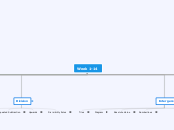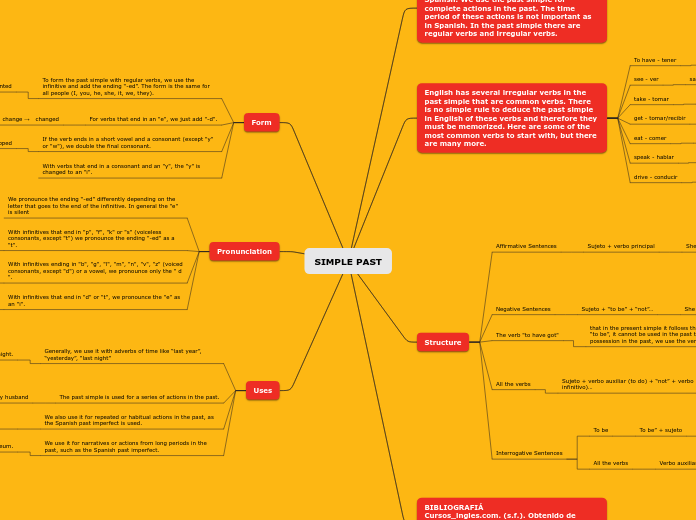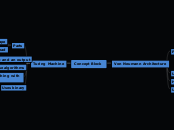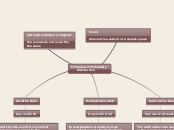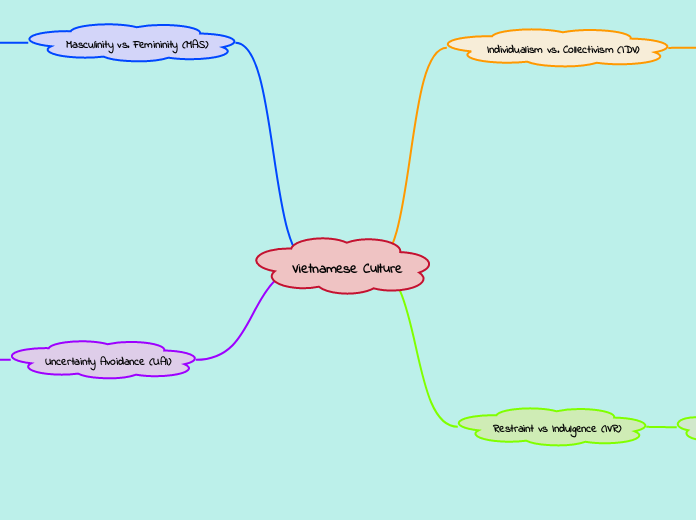Week 1-14
Fractions
Definition:
When a whole is divided into equal pieces, if fewer equal pieces are needed to make up the whole, then each piece must be larger. When two positive fractions have the same numerator, they represent the same number of parts, but in the fraction with the smaller denominator, the parts are larger.
Rule:
K, C, F or K, C, I = Keep, Change, Flip (Inverse)
*Follow same produce as Multiplication of Fractions with unlike denominators
Multiply
Simplify first = top to bottom, and across
Multiply straight across then change to a Mixed number
Subtraction
You have to change the denominators to be the same number by finding out what is missing in each fraction (denominator).
Simplify = to to bottom
Then you subtract straight across.
Change to a mixed number
Addition
Example:
2 + 5 = 2 x 6 + 5 x 2 = 12 + 10 = 22 (divide by 2) = 11
3 + 9 = 3 x 6 + 9 x 2 = 18 + 18 = 18 (divide by 2) = 9
Answer is:
11 or simplify 11 = 1 2/9
9 or simplify 9
Unlike Denominators
You have to change the denominators to be the same number by finding out what is missing in each fraction (denominator).
Simplify = to to bottom
Then you add straight across.
Change to a mixed number
Simplify
Example:
12 (divided by 4) = 3
20 (divided by 4) = 5
OR
12 = 2 x 2 x 3 = 3
20 = 2 x 2 x 5 = 5
OR
y 2 = y x y x 1 = 1
y 3 = y x y x y = y
Equivilency
Example (Set Model):
2 = 4
3 = 6
OR
2 = 6
3 = 9
OR
2 = * * *
3
OR
2 = * * *
3
OR
2 = + + +
3
OR
2 = + + +
3
Greater Than or Less Than
Notes:
- The aligator/pacman eats the the bigger number.
- The lower number is inside pacman's face or the aligator's body.
- If the denominators are different numbers, then the fraction with the bigger denominator is greater (bigger size of pieces.)
- If the denominators are the same numbers, then the fraction with the bigger numerator is greater (bigger amount of pieces.
Example:
4 is greater than 4
7 is greater than 11
5 is greater than 3
12 is greater than 12
4 ? 10
5 ? 11
4 x11 is less than 10 x11 = 44 is less than 55
5 x11 is less than 11 x11 = 55 is less than 55
OR
4 = 44 is less than 10 = 50
5 = 50 is less than 11 = 44
Linear Model
Example:
5 is greater then 12
9 is greater then 25
l---------l----------l----------l----------l
0----- 12/25------ 1/2------- 5/9-------- 1
Area Model
Example:
4 is less then 10
5 is less then 11
l l l l l l is less then l l l l l l l l l l l l
l l l l l l is less then l l l l l l l l l l l l
l l l l l l is less then l l l l l l l l l l l l
Scientific Notation
- position of a decimal, bigger or equal to 1, multiply by the power of 10
- if the exponent is negative the answer will have a decimal, a small number
- if the exponent is positive the answer will not have a decimal, a big number
Example:
134000 = 1.34 x 105
0.00000761 = 7.61 x 10-6
Properties
Distributive for Multiplication
A = l x w
Examples:
25(15) = 375
10 + 15
20 l 200 l 100 l
+
5 l 50 l 25 l
300 + 75 = 375
4(-3 + 5) + 8
-3 + 5
4 l -12 l 20 l
4(x + 5) = 4x + 20
x + 5
4 l 4x l 20 l
3(x + 7) = 3x + 21
x + 7
3 l 3x l 21 l
10(2x2 - 4x) = 20x2 - 40x
2x2 - 4x
10 l 20x2 l -40x l
4(x2 + 3x -1) = 4x2 + 12x - 4
x2 + 3x - 1
4 l 4x2 l 12x l -4 l
(x + 2)(x + 3) = x2 + 5x + 6
x + 3
x l x2 l 3x l
+
2 l 2x l 6 l
(x + 2)(x + 5) = x2 + 7x + 10
x + 5
x l x2 l 5x l
+
2 l 2x l 10 l
Difference of Squares
Example:
(x + 2)(x - 2) = x2 - 4
x - 2
x l x2 l - 2x l
+
2 l 2x l - 4 l
x2 + ox - 4 = x2 - 4
(3x - 7)(3x + 7) = 9x2 - 49
3x - 7
3x l 9x2 l - 21x l
+
7 l 21x l - 49 l
9x2 + ox - 49 = 9x2 - 49
Factoring
Example:
6x + 15 = 3(2x + 5)
3 l 6x l +15 l
2x + 5
x2 - 3x = x(x - 3)
x l x2 l - 3x l
x - 3
3x2y - 9xy + 6y = 3y(x2 - 3x + 2)
3y l 3x2 y l -9xy l + 6y l
x2 - 3x + 2
Communitive For Addition
Example:
5 + 7 + 2 or 5 + 2 + 7
Associative for Addition
- identifies what numbers are being associated with - order does not change or the answer, but the numbers grouped does change.
Example:
(4 + 2 + 5) or (4 + 2) + 5 or 4 + (2 + 5)
-5 + (5 + 3) or (-5 + 5) + 3
- same sign = positive number
- different sign = negative number
JUST SOLVE
Rules
- same sign = positive number
- different sign = negative number
- add a zero bank if the coefficent is negative
- tiles (show) if numbers are less than 10
- just solve if numbers are greater than 10
Negative Coefficent
Example:
-3(2) = -6
++ ++ ++ ++++
------ ----
-3(-2) = 6
++++++ ++++
-- -- -- ----
-1(-3) = 3
+++ +++++++
--- -------
-2(4) = -8
++++ ++++ ++++
-------- ----
Positive Coefficent
Example:
6(2) = 12
l l l l l l l l l l l l = 12
6(1) = 6
l l l l l l = 6
3(-2) = -6
(- -)(- -)(- -) = -6
5(-4) = -20
(- - - -)(- - - -)(- - - -)(- - - -)(- - - -) = -20
Numberlines
Number Lines: a line with numbers placed in their correct positions
- Useful fro addition and subtraction
- Useful for showing relations of numbers
Absolute Value
Absolute Value: how far away a number is from zero
Example:
6 is 6 units from zero
Absolute value of 6 = 6
-6 is 6 units from zero
Absolute value of -6 = 6 or l-6l
Diagram
Draw Diagram: use when you have any numbers bigger than ten.
Examples:
-15 + 436 = +421
- sub. ++
-15 + 436
- 15
+421
Examples:
-47 + (26) = -73
-- add. -
-47 + (-26) 26
+ 47
-73
Tiles
Draw Tiles: use when you have any numbers less than ten.
Examples: Addition:
2 add 4 = -2
+ +
----
-5 add -2 = -7
----- --
Examples: Subtraction:
4 take away 3 = 1
+ + + +
-5 take away -2 = -3
+ + + + +
-5 take away 1 = -4
+ + + + +
Division
6 divided by 6 = 1
6 = Total Number
6 = Number of Groups
1 = Number of Units Inside 1 Group
*If divisor gets smaller = answer gets bigger (Inverse Relationship)
Divisibility Rules
- Divisible by 2 = look at the 1's
- Divisible by 4 = look at 10's and 1's (last 2 numbers)
- Divisible by 5 = look if it ends in 5 or 0
- Divisible by 8 = look at the last 3 numbers
- Divisible by 3 = add numbers and if the sum is divisible by 3
- Divisible by 10 = ends in 0
- Divisible by 6 = divisible by 2 and 3
- Divisible by 9 = add numbers and if the sum is divisible by 9
Upwards
382 divided by 3 = 127 1/3
-3 -6 -21 = 1
3 8 2 = 127 1/3
3
Repeated Subtraction
382 divided by 3 = 127 1/3
127 1/3
3 l 382
-30
352
-30
322
-300
22
-15
7
-6
1
Traditional
382 divided by 3 = 127 r1
127 r1
3 l 382
-3
08
-6
22
-21
10
-9
10
-9
Multiplication
6(6) = 36
6 = Number of Groups
(6) = Number of Units Inside 1 Group
36 = Total Number of Whole Groups
*ORDER MATTERS*
Lattice
Expanded
Area Model for Multiplication
1.) A Rectangle with a length of 10 + 1 and a width of 4 - A = 44
Distributive Property:
(4)(10 + 1)
40 + 4 =44
2.) A Rectangle with a length of 10 + 3 and a width of 10 + 2 - A = 156
10 + 3 = 13
10 + 2 = 12
A = 12 x 13 = 156
Alternative Algorithims: Subtraction
Traditonal
47 - 12 = 35
47
- 12
35
Equal Add Ons
47 - 12 = 35
47 + 8 = 55
- 12 + 8 = - (20)
35
Alternative Algorithims:Additon Estimating
31 + 24 + 15 + 42 + 39
80
40
+ 30
150
Front End
31 + 24 + 15 + 42 + 39
30
20
10
40
+ 30
130
Alternative Algorithims: Addition
Compatible Numbers
31 + 24 + 15 + 42 + 39 = 151
2
31 1 + 9 = 10
24 4 + 5 + 2 = 11
15
42 3 + 2 + 1 + 4 = 10
+ 39 3 + 2 = 5
151
Scratch Method
31 + 24 + 15 + 42 + 39 = 151
1 2
31
24
15
2 42
+ 39 1
151
5.) Tradtional
46 + 28 = 74
1
46
+ 28
74
4.) Lattice
3.) Left to Right
46 + 28 = 74
46
+ 28
74
2.) Partial Sum
46 + 28 = 74
46 + 20 = 66
66 + 8 = 74
1.) Expanded
46 + 28 = 74
40 + 6
+ 20 + 8
60 + 14
60
+ 10 + 4
70 + 4 =74
Other Bases
Never have any number bigger than the base number
Other bases to base ten
1.) Convert 23 four to ten = 11
23 four
2 long 3 unit
2(4) 3
8 + 3 = 11
2.) Convert 42 eight to ten = 34
42 eight
4 long 2 unit
4(8) 2
32 + 2 = 34
3.) Covert 123 five to ten = 38
123 five
1 flat 2 long 3 unit
25 + 10 + 3 = 38
Base ten to other bases
Examples:
1.) 15 to base five = 3 long, 0 units = 30 five
2.) 15 to base three = 1 flat, 2 longs, 0 units = 120 three
3.) 17 to base six = 2 long, 5 units = 25 six
4.) 11 to base four = 2 long, 3 units = 23 four
5.) 14 to base three = 1 flat, 1 long, 2 units = 112 three
6.)356 to base four = 11210 four
4 l356
4 l89 r 0
4 l22 r 1
4 l5 r 2
1
7.) 14 to base five = 24 five
5 l14
2 r 4
8.) 14 ro base three = 112 three
- 3 l14
3 l4 r 2
1 r 1
Vocab
Order of Operations
G = groups (identified by an additon or subtraction symbol)
E = exponents
D M = (left to right) divide/multiply
S A = (left to right) subtract/addition
DO NOT use or teach PEMDAS = confusing!!!!!!!
Denominaror
Denominator: tells us the size of each whole or piece.
Example:
4
5 = the denominator
Numerator
Numerator: tells us how many pieces we have of a whole.
Example:
4 = the numerator
5
Standard Form
- the standard way to write a number (the normal way)
Example:
2 , 345 , 1,112 , 4 , 300 , 32 , 250
Irrational Numbers
- a "number" that cannot be written as a ratio (fraction), never stops and never repeats
Rational Numbers
- can always be written as a ration (fraction), a number that stops or repeats
Example:
4.12 , x = + 5 , x = + 7 , x2 = 49 , x2 = 25
Trinomial
- three "numbers" that cannot be simplified
Binomial
- two "numbers" that cannot be simplified
Volumw
Volume = l x w x d
- any three "numbers" together
Area
A = l x w (any two "numbers" together)
- generic rectangle
- base 10 recrangle
Zero Bank
Zero Bank: adding any equal number of pairs of positive and negative numbers.
Zero Pairs
Zero Pairs: add a positive and a negative (cancels each other out).
Intergers
Intergers: whole counting numbers
Venn Diagram
Venn Diagram: sets are represented by shapes; usually circles or ovals. The elements of a set are labelled within the circle. They are especially useful for showing relationships between sets.
Double Bubble
GCF:
(2 x 2 x 2) x 3 x (5 x 5) and (2 x 2) x 5 x (7 x 7) = 20
Example:
#1 2 2 #2
2 2
2 5
3 7
5 7
5
2 x 2 x 5 = 20
LCM:
(2 x 2 x 2) x 3 x (5 x 5) and (2 x 2) x 5 x (7 x 7) =
(2 x 2 x 2) x 3 x (5 x 5) x (7 x 7)
Example:
#1 2 2 #2
2 2
2 5
3 7
5 7
5
(2 x 2 x 2) x 3 x (5 x 5) x (7 x 7)
Upside Down Division
Upside Down Division: is one of the techniques used in Prime Factorization method to factor numbers.
LCM
LCM: Least Common Multiple (bigger numbers)
LCM:
28 and 60 = 420
Example:
28 60
(4) (7) (5) (12)
(2) (2) (6) (2)
(3) (2)
(2)(2)(7)(5)(3)(2)(2)
2 x 2 x 7 x 5 x 3 = 420
GCF or GCD
GCF = Greatest Common Factor (small numbers)
OR
GCD = Greatest Common Divisor (small numbers)
Factor Tree
GCF or GCD:
18 and 30 = 6
Example:
18 30
(9) (2) (3) (10)
(3) (3) (2) (5)
2 x 3 x 3 2 x 3 x 5
2 x 3 = 6 2 x 3 = 6
List
GCF or GCD:
18 and 30 = 6
Example:
Factors of 18 = 1, 2, 3, 6, 9, 18
Factors of 30 = 1, 2, 3, 5, 6, 10, 15, 20
Composite Numbers
Composite Numbers: Divisible by more than 2 factors
Example:
385 = Composite
385 divided by 5 = YES
285 divided by 385 = YES
384 divided by 1 = YES
Prime Numbers
Prime Numbers: Divisible by 1 and itself
- Prime Numbers = 2, 3, 5, 7, 11, 13, 19 ...
Example:
257 = Prime
257 divided by 7 = NO
257 divided by 11 = NO
257 divided by 13 = NO
Base Ten
Unit = 1
Long = 10
Flat = 100
Cube = 1000
Repeats on and on...
UnDevCarLo
1.) Understand the problem
2.) Develop a plan
- your way to solve with pictures, guess & check, equations
3.) Carry out plan
- do the work & solve
4.) Look back- check your work
CCR
